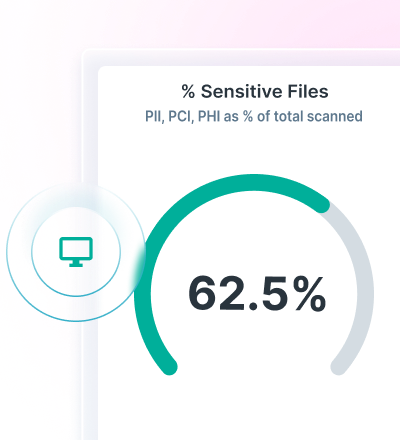Reimagining Cyber Defence: The Rise Of Artificial Intelligence In Security
0 분 읽기
The global cyber threat arena is advancing at a pace traditional defences cannot match. Attackers now use automation and advanced evasion tactics to exploit vulnerabilities in real time. For mid-market, commercial and enterprise organisations, the stakes are higher than ever: reputational damage, regulatory penalties and multimillion-dollar losses are no longer hypothetical risks but frequent headlines.
To meet this reality, security leaders are turning to artificial intelligence-driven security systems. Unlike legacy tools that rely on signature detection or manual intervention, AI security platforms continuously learn, adapt and act at machine speed. The result is a more proactive, resilient form of defence capable of keeping pace with adversaries.
What makes an artificial intelligence security framework distinct
AI security is the application of machine learning (ML), deep learning and behavioural analytics to cybersecurity operations. Rather than responding only after threats reveal themselves, AI establishes behavioural baselines, detects subtle anomalies and executes actions autonomously.
This makes AI security systems fundamentally different from traditional tools. At the core, they excel at:
- Speed — They process millions of events per second and identify malicious activity in real time.
- Versatility — They operate across entire hybrid environments: cloud, on-premises and edge.
- Proactivity — AI security recognises threats before they materialise, not after damage occurs.
- Adaptability — The system continuously re-trains models on new attack patterns and behaviours.
Modern AI security systems also extend beyond detection to orchestrate data protection, compliance alignment and risk management at a scale impossible for human teams alone.
Technical advantages of AI security systems
When deployed strategically, AI security systems become a force multiplier for security operations teams, enabling them to anticipate threats and allocate resources where they matter most.
Enhanced threat detection and proactive defence
AI platforms don’t just scan for known signatures; they analyse the entire digital environment (network traffic, endpoint activity and application behaviours) in context. By identifying unusual patterns invisible to humans, they can stop ransomware, insider threats or zero-day exploits at inception.
However, the real advantage is their ability to move organisations from a reactive model to one where risks are anticipated and neutralised before escalation. This stance reduces dwell time and keeps attackers from gaining persistence inside networks.
Automated response and intelligent management
Historically, incident response required hours or days of investigation, manual containment and escalation through multiple teams. AI-based orchestration eliminates these inefficiencies by quarantining compromised devices, blocking malicious IPs or isolating suspicious email accounts instantly.
Beyond speed, automation also adds consistency. Actions are executed according to defined playbooks without human hesitation or error. Mean time to respond (MTTR) is significantly reduced and analysts get to focus on higher-value strategic tasks instead of mundane firefighting.
Continuous learning and adaptive intelligence
AI security models are not static. They learn from every new dataset, every attack attempt and every anomaly they process. This continuous feedback loop strengthens detection accuracy, dramatically lowers false positives and evolves the system as attacker techniques change. Unlike traditional rule-based tools that require constant manual updates, an adaptive AI engine effectively “future-proofs” defence posture.
Operational efficiency and scalability
Enterprises generate terabytes of telemetry daily, from cloud workloads to IoT devices. Human analysts cannot realistically filter and prioritise this volume of data. Artificial intelligence in security systems helps it excel at scale, processing millions of signals in real time and surfacing only the most relevant threats for human review.
Such efficiency prevents alert fatigue, which is one of the leading causes of oversight in security operations centres (SOCs). The result? Security teams can operate leaner while still maintaining enterprise-grade defence.
Amplified threat intelligence
A notable strength of AI is its ability to augment human knowledge with global context. By aggregating threat intelligence feeds from across the world and cross-referencing them with live enterprise data, AI delivers unparalleled visibility.
It can connect disparate events, a login attempt from an unusual location, followed by abnormal file movement, to flag coordinated attacks. Through this fusion, predictive capabilities are enhanced and CISOs get actionable foresight rather than fragmented signals.
Risks and governance considerations
While the advantages of embedding AI in security systems are clear, they’re not without risks. The same technology that empowers defenders can also be weaponised by attackers, creating a constantly evolving challenge for enterprises.
Emerging attack vectors
Adversarial AI is used to generate deepfakes, launch convincing phishing campaigns and probe for weaknesses faster than human defenders can react. As attackers adopt their own AI-driven methods, enterprises must recognise that the cyber threat environment is no longer human vs. machine, but machine vs. machine.
Systemic and ethical challenges
Because AI models are only as good as the data they’re trained on, biases, gaps or incomplete datasets can create blind spots for adversaries to exploit. Furthermore, the opaque “black box” nature of some AI tools can reduce trust among stakeholders who require visibility into why a system took a certain action. For industries bound by strict compliance obligations, transparency is as important as performance.
Human–AI collaboration
AI cannot replace the critical thinking, context and creativity human experts bring to cybersecurity. Instead, effective deployment demands human oversight: analysts guiding models, validating decisions and applying judgment where nuance is required.
Enterprises that treat AI as a silver bullet risk creating new vulnerabilities through over-reliance. The most effective defence strategies fuse automation with human expertise and balance speed with discernment.
Strategic imperatives for organisations
For AI to deliver lasting value, adoption must be structured and deliberate. Executives and security leaders should focus on five imperatives:
- Scale with purpose
Deploy AI security where the organisation is most exposed, whether that’s hybrid cloud workloads, endpoints or identity access management. Prioritise scalability to manage growing data volumes without sacrificing accuracy.
- Integrate AI with Zero Trust and SASE models
AI is most effective when embedded within modern frameworks like Secure Access Service Edge (SASE) and Zero Trust. This allows organisations to not only control access but also safeguard the use of sensitive data wherever it flows.
- Governance and oversight
Implement strict identity and access controls, maintain explainability in AI-driven decision-making and validate models regularly. Governance should be treated as a continuous discipline instead of a compliance checkbox.
- Human-in-the-loop processes
Design playbooks where AI recommends or executes responses, but humans validate actions in critical or high-risk scenarios. This ensures accuracy without eroding accountability.
- Compliance by design
Align artificial intelligence security deployments with regulatory frameworks from the outset. With pre-built compliance models available for GDPR, HIPAA and dozens of global regulations, organisations can reduce risk while accelerating adoption.
A final word on AI as the new foundation of cyber defence
Enterprises that embrace artificial intelligence in security systems position themselves to act with speed and confidence against adversaries who are equally empowered by AI. The winners in this new battleground will be those who combine machine precision with human oversight, governance and strategy. Those who hesitate risk being left with defences built for an era that no longer exists.
Forcepoint’s DSPM (Data Security Posture Management solution is built to address this reality. Utilising proprietary AI Mesh technology, it empowers enterprises by identifying, categorising and remediating high-risk data. Learn more on how Forcepoint can help your organisation strengthen its cyber defence strategy.
기사에서
X-Labs
내 받은 편지함으로 인사이트, 분석 및 뉴스 바로 받기










